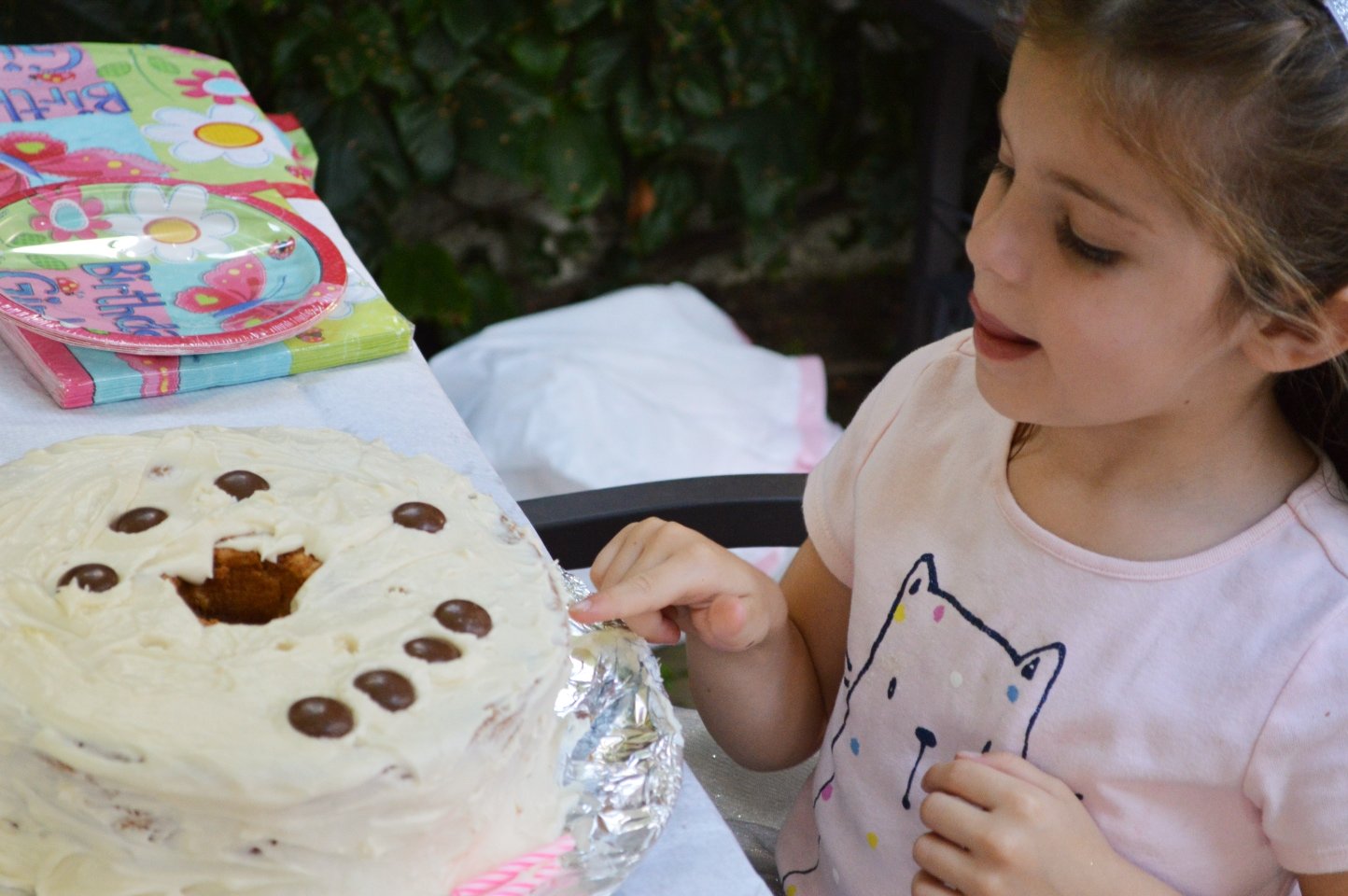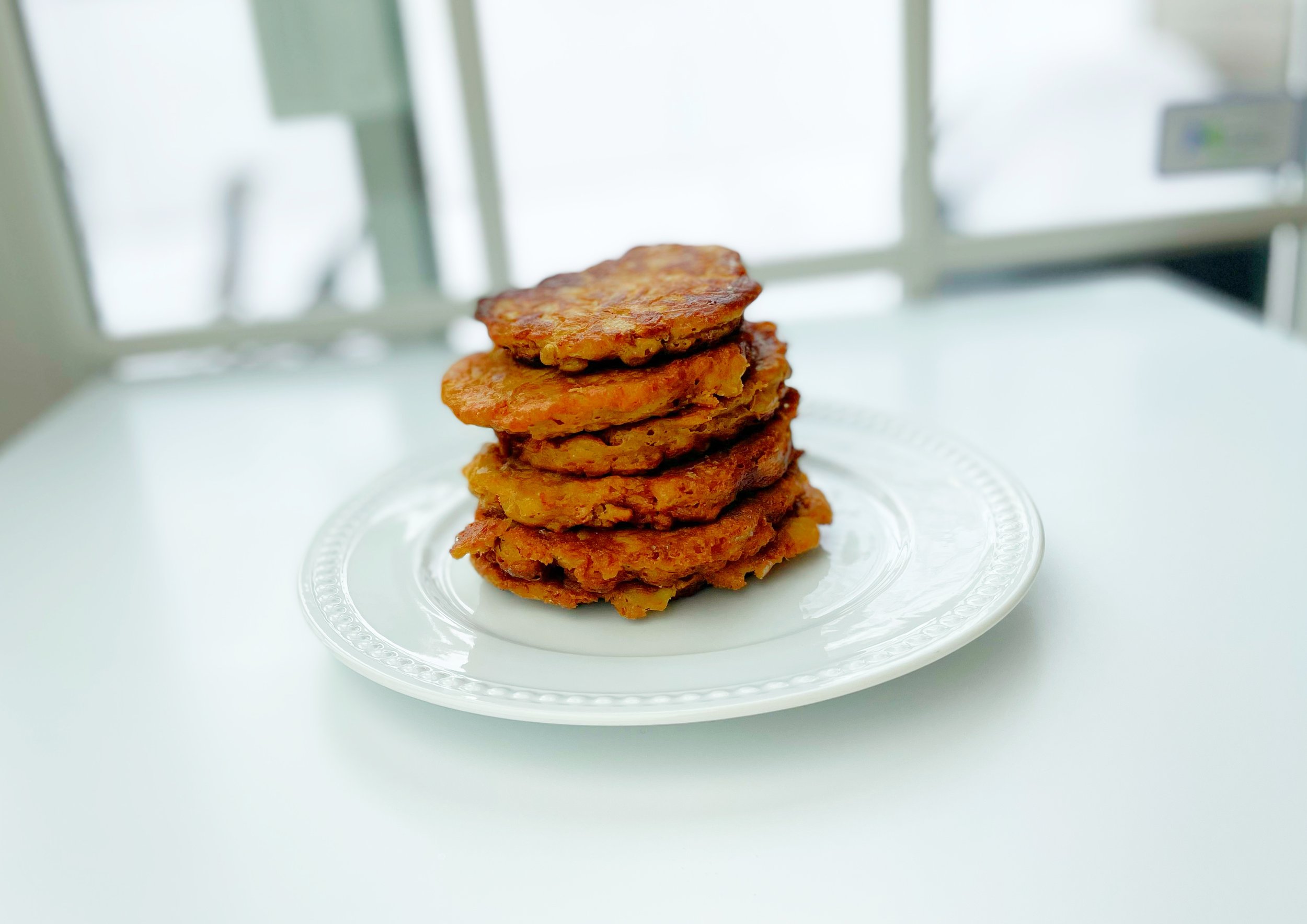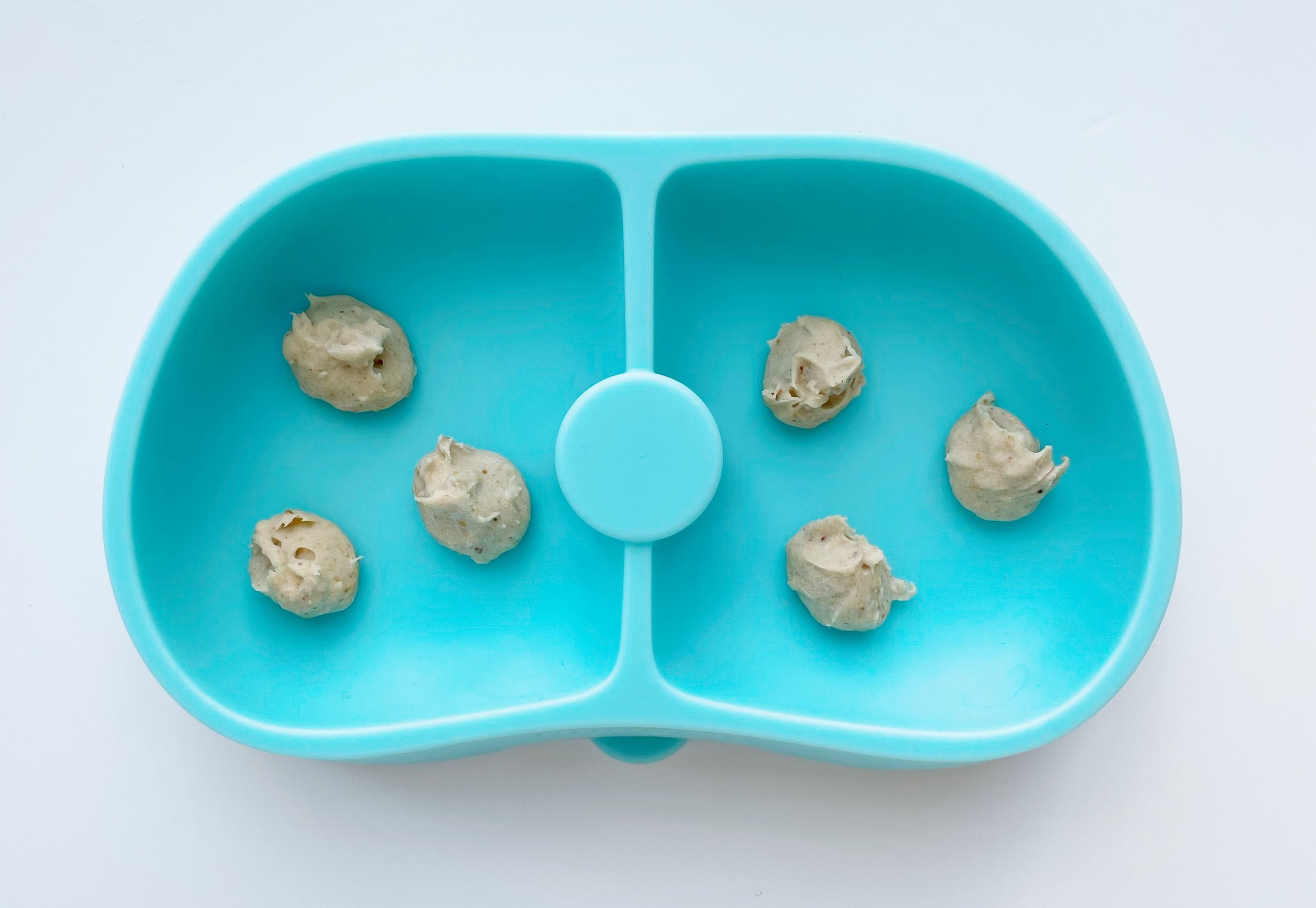3 Reasons Added Sugars Aren’t Recommended for Kids Under 2
Did you know that added sugars make up 17% of the average child’s daily calories? And that half of that sugar comes from sugar-sweetened drinks?
The recent 2020-2025 Dietary Guidelines for Americans provided recommendations for infants and toddlers for the first time, which was a big deal in the nutrition world. One of the key takeaways from the report is that foods with added sugars are not recommended for children younger than 2 years old.
You might be thinking, “...but what about birthday cake?!“
Foods with added sugars are an enjoyable part of our culture, traditions, and celebrations. Is it the end of the world if babies and toddlers under 2 have a little added sugar here and there? No!
But as a general rule, it’s smart to avoid offering sugary foods as best you can during this stage of life.
In this article, we’ll dive into the reasons why, how best to avoid added sugars, how to tell the difference between added and natural sugars and why they are different, as well as how/when to fold foods with added sugar into a balanced diet for kids as they grow.
Why do most babies prefer sweet foods?
Sweet flavors are familiar to babies, who are hardwired from birth to prefer them.
Amniotic fluid in the womb is sweet, and so is breast milk and formula, a little one's first food.
Milk contains the naturally occurring sugar, lactose. The sweet, pleasant taste of milk ensures that babies want to consume their main source of nutrition throughout their first 12 months.
How much added sugar is ok for Kids?
The Dietary Guidelines for Americans recommends that people over 2 years old limit added sugar intake to less than 10% of the daily diet, to help make sure we get the nutrients we need without consuming too much energy.
As an example, if a child's daily energy needs are 1,400 calories, a maximum of 140 calories (35 g) can come from added sugar in foods. For reference, four squares of graham crackers contain 8 g of added sugars.
On the other hand, the Dietary Guidelines, the AAP, AHA, and CDC all recommend that added sugars be avoided for children under 2 years old.
Here’s why...
Why Shouldn’t Babies Have Added Sugars?
The period between birth and toddlerhood is critical for brain development and physical growth. Babies triple their weight, and the brain grows exponentially in the first year. A nourishing diet during these stages of rapid development is crucial, and vitamin deficiencies can be detrimental.
Added sugars don’t provide any of the nutrients babies and toddlers need to thrive and grow, and in excess can lead to some longer-term health issues.
1. Leaves less room in the diet for nutrient-rich foods
Most 1 to 2-year-old babies eat three meals and two snacks daily, but their tummies are small and may only fit a few bites of food at any given meal or snack.
That's why making every bite count is essential to help them get the nutrients they need to thrive and grow.
When babies fill up on foods with added sugars, these more nutrient-poor foods will likely replace the more nutrient-packed foods that support healthy growth and brain development.
2. Establishes taste preferences for sweet foods and drinks
Kids develop taste preferences over time for foods to which they are repeatedly exposed. Studies show that this type of flavor training can prime a baby's palate - even to enjoy the taste of bitter vegetables and leafy greens! In one study, infants given a taste of vegetable puree in their bottle had a higher intake of vegetables during complementary feeding.
Babies are already familiar with sweet flavors from breast milk and/or formula, so rather than offering foods with added sugars and reinforcing a preference for sweet, it’s wise to prioritize offering different flavors (like sour, bitter, etc.) to help train a child’s palate to appreciate a variety down the road.
3. Increases risk of disease
According to the AAP, it’s best to avoid added sugars in the diets of babies under 24 months.
For kids older than age 2, the AAP recommends aiming for less than 25 g of (6 teaspoons) of added sugars per day, as eating more than 10% of calories from added sugars increases a child's risk of type 2 diabetes, and having high LDL cholesterol (the "bad" type of cholesterol), low HDL (the "good" cholesterol), and high triglycerides.
Further, some fascinating new research came out in 2024, which looked at the impact of sugar rationing in the United Kingdom in the 1950s, which reduced early sugar consumption to within what is recommended in the dietary guidelines, and whether there were any long-term associations concerning chronic disease. Not surprisingly, it seems that both prenatal and postnatal sugar restriction were protective against type 2 diabetes and hypertension risk.
In a nutshell, when foods with added sugar replace nutrient-rich foods in a child’s diet, it can mean a higher risk of some diseases, including:
Obesity
Tooth decay
Heart disease
High cholesterol
High blood pressure
Type 2 diabetes
Fatty liver disease
Is there a difference between added sugars & natural sugars?
Added sugars are sugars added to food and drinks during processing or when foods are prepared at home (like adding sugar or another sweetener to coffee or tea or sprinkling it on cereal). Many common foods and condiments have added sugars to make them tastier and extend shelf-life, like catsup and some breakfast cereals.
Natural sugars are found in fruits and vegetables (i.e., fructose, sucrose) and milk (lactose). The sugar found in these whole foods occurs naturally without processing.
Parents often ask if natural sugars are better for kids than added sugars and whether we should eliminate or limit fruit because it’s high in sugar.
Inside the body, sugar acts as a source of energy. Fruit contains fructose (a natural sugar), but it's also a nutrient-rich powerhouse loaded with fiber, micronutrients, and antioxidants. Milk contains a type of sugar called lactose, but milk is also an excellent source of protein, calcium, vitamin D, and more.
The difference is that fruits, vegetables, and dairy foods contribute health-promoting nutrients to the diet, while foods high in added sugars tend to offer very little to no nutrients and often displace those that do.
So how do you know which foods have added sugars?
Let’s dive into nutrition labels.
How to find added sugars on a nutrition facts label
Added sugars are found in many foods. The good news is that nutrition labels were recently updated and now list added sugars separately, making them easier to spot.
You'll find sugar and added sugar under total carbohydrates on the label.
In the nutrition facts below, a ½ cup serving of unsweetened apple sauce contains 14 g of carbohydrates, and 12 g of those carbohydrates come from sugar. But there's no added sugar.
Here's a nutrition label for graham crackers. One serving of eight cracker squares contains 8 g of added sugars. There are 24 g of carbohydrates, and sugar is 8 g of the total carbs. But all 8 g are added sugars!
You might still see the old labels that don’t have a separate number for the added sugars as the older label style gets phased out. In this case, check the ingredients list to find whether added sugars are included.
Added sugars include natural sugars such as honey and maple syrup, white sugar, and/or processed sugars like high fructose corn syrup. You can assume that any ingredient ending in -ose will also be an added sugar.
Here are some sources of added sugars you might see in an ingredients list:
Brown sugar
Caramel
Corn syrup
High fructose corn syrup
Fruit juice concentrate
Fructose
Dextrose
Maple syrup
Honey
Molasses
Powdered Sugar
Simple Syrup
White sugar
Tips to Reduce Added Sugar
Now that you know how to find added sugars in foods and drinks, here are a few tips that can help reduce the added sugars in your family’s diet.
Before age 2, younger babies and many toddlers without older siblings don’t yet know what they are missing when it comes to sweets and treats! As best you can, refrain from offering foods and beverages with added sugars until they start to become conscious of what they are missing out on. If you can hold out to age two, great! If not, no biggie. In the meantime, here are some of my favorite, nutrient-rich, baby-friendly recipes with no added sugar:
Interestingly, around the age of 2, many kids start to notice what others around them are eating, and at this point, over-restricting foods with added-sugar can become counterproductive. Instead, try these tips:
Use Ellyn Satter’s “Division of Responsibility” to guide mealtimes: you decide what, when, and where, then leave it up to your child whether and how much to eat.
Serve a dessert food right along with dinner foods to help reduce sugar fixations and cut down on the message that we only endure dinner foods so that we can get to dessert!
Don’t use sugary foods as a reward, which makes them that much more desirable and can lead to a fixation on sweets and treats.
Offer water or milk (instead of sugar-sweetened beverages like sports drinks, soda, fruit juice from concentrate).
Be on the lookout for hidden sources of added sugars in packaged foods (like catsup, dried fruits, salad dressings, crackers, breakfast cereals, etc.) and choose products with little to no added sugars whenever possible.
Limit 100% fruit juice to no more than 4 oz a day or omit juice altogether (even though there’s no added sugar, the juicing process leaves behind a concentrated source of fruit sugar and can train the palate to want all beverages to taste equally as sweet).
Role model eating sweets in moderation and ENJOY them along with your kids.
Final Thoughts About Sugar, Babies, & Toddlers
What about your baby’s first birthday cake?
Remember, a little sugar here and there before age 2 isn't the end of the world. Make healthy choices where you can and allow sugars when necessary. Model a healthy relationship with food by enjoying a variety and not having a negative reaction when your little one eats sweets.
Responsive feeding teaches your little one how to listen to their bodies and eat the foods and amounts of foods that their bodies need. That may include birthday cake, sweets at certain times, etc. depending on your family’s preferences. If added sugar is a very small part of your baby's diet, it will balance out!
If you’re getting ready to start your baby on solids, download my FREE Baby-Led Feeding Essential Checklist to make sure you have everything you need to get started. If you prefer to learn via video, you might also want to check out my online course for parents, based on my best-selling book which will walk you through the whole process of starting solids using a baby-led approach.
Alternatively, if your baby is almost ready to start solids and you’re looking for someone you trust to map out the entire first 8 weeks of your baby’s solid food journey, check out my NEW baby-led feeding guide and cookbook!
It takes all the stress, planning, and thinking out of starting solids, introducing allergens, and reducing the risk of food allergies and comes with a flexible allergen introduction plan, 8 weeks of BLF + allergen maintenance meal plans, and 80 family-friendly recipes (all of which contain multiple allergens) that you can feed the whole family.
Lastly, if you are struggling with a nutrition-related concern and looking for personalized nutrition support for yourself or your children, I am currently accepting new clients in my virtual private practice. Looking forward to meeting you online!
















